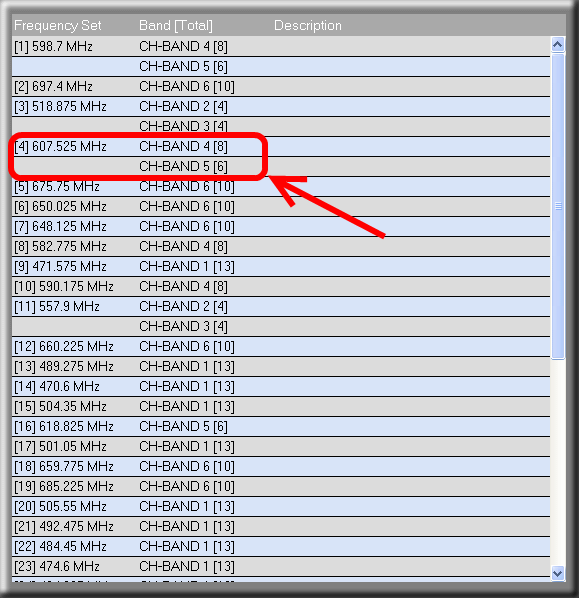
Intermod Assists' 'Channel Bands' feature allows you to organize the frequencies within a frequency set into different groups based on their frequency ranges. Often it is the case where audio engineers are working with a variety of different wireless audio equipment that operate in different frequency ranges. However, because the equipment operates within close geographical proximity then one frequency set is applied when configuring the frequency coordination and assigning channels to transmitters. In addition to setting the Start/End frequency for each band, you can also assign a short name or label. If you wish, channel bands may overlap one another -- in which case certain frequencies may belong to more than one channel band. It is important to note that frequencies not included within a channel band will be locked-out of the intermodulation analysis.

In the example above we've divided our frequency range (470 to 700 MHz) into 6 channel bands. In the results window the members of the frequency set are ranked according to reliability. Furthermore, under the 'Band' column is listed the channel band's label that each frequency belongs to. Also, the number in brackets is the total number of frequencies that fall within that channel band. As seen above, the frequency 607.525 MHz falls within two channel bands -- "CH-BAND4" and "CH-BAND5". "CH-BAND4" includes a total of 8 frequencies and "CH-BAND5" includes a total of 6 frequencies. Just to be clear, all channel bands (and frequencies) belong to the same frequency set -- hence, frequencies in different channel bands are still intermod-compatible.